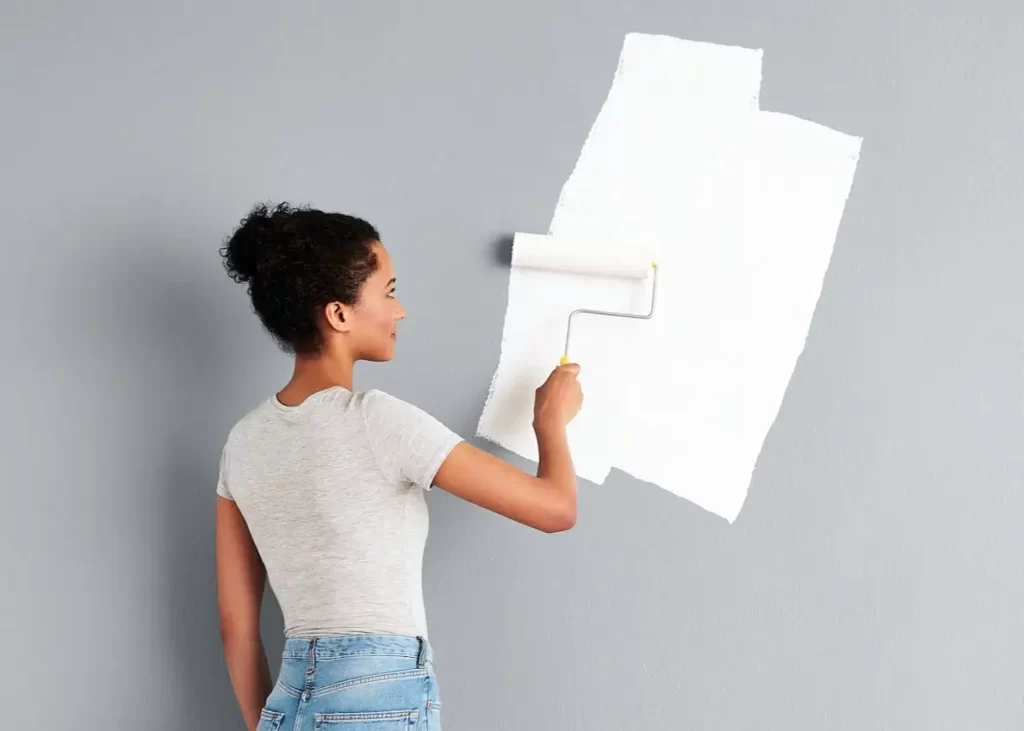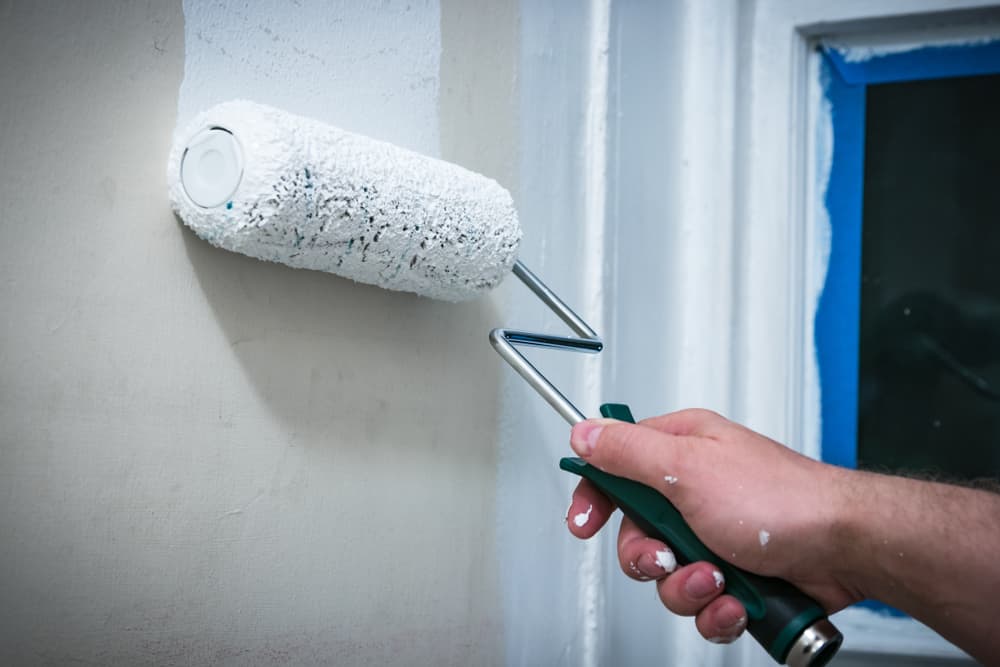Last Updated on August 2, 2023 By Emma W. Thomas
Using primer as paint is not recommended. Primers are designed to create a suitable surface for paint adhesion and improve coverage. They lack the durability, color options, and finish that regular paint provides. For a finished look, it’s best to use a proper paint product.
Can One Use The Primer As Paint?
While using a primer as paint might sound like a plausible idea to some, it’s crucial to understand that primers and paints have different purposes. This article outlines reasons why it is not recommended to use primer as paint.
1. Primers are Not Designed for Durability:
Primers are designed to prepare surfaces for painting, not withstand the various environmental factors that paint can. They lack the additives found in paints that make them resistant to scuffs, scratches, and external weather conditions.
2. Lack of Aesthetic Appeal:
Primers don’t have the same finish as paint. They are often dull and lack the sheen, glossy, satin, or matte finish that regular paint offers. This results in an unattractive appearance when used as paint.
3. Limited Colour Choices:
Primers usually come in only neutral colors, typically white or grey. As such, you won’t get the same range of color choices that you would with traditional paints.
4. Absorbs Rather than Repels Water:
Unlike paint, primers are not designed to repel water but to absorb and dry out quickly. When used as paints, they fail to protect the surface from water damage in the long run.
5. It’s not Cost Effective:
Since primer cannot adequately serve as paint, repainting would be necessary earlier than anticipated. This will result in higher costs in the long run for more primer, paint, and labor.
| Primers | Paints |
|---|---|
| Prepare surfaces for painting | Provides color and protection |
| Lack durability | Durability to withstand environmental factors |
| Limited colors | Wide range of colors |
| Absorbs water | Designed to repel water |
| Lesser life-span | Has a long life-span |
Understanding the specific functions of primers and paints can save you from unexpected professional costs and preserve the integrity of your surfaces. Therefore, using a primer as the paint is a practice experts would not recommend.
What Is The Purpose Of Primer Paint?

A paint primer is a product that is used under the first coat of paint. It is used on both interior and exterior surfaces. Its main purpose is to prepare surfaces for painting. The paint primer has other functions, making the wall surface smoother to ensure paint glides easily on the surface when painting. It extends the normal lifespan of paint while also adding protection to the wall surface.
Other secondary purposes are covering dark shade walls that require a change in the color of the paint. The primer conceals the initial color of the wall, preparing it for a new one. It acts as a blocker and helps the wall maintain a clean, clear, and attractive look after painting.
How Long Should One Wait Between Primer And Paint?
The time taken by the primer to dry depends on various factors such as humidity level in the environment. In areas with high humidity levels, primer takes longer to dry. When used interiorly, one should ensure the availability of air conditioning before the painting process begins. Some primers have indications on when they will dry written on their instructions. Some take an hour or two, whereas others may take up even 24 hours.
Most oil-based primers take longer to dry and should be given at least 24 hours to ensure it has dried completely and is ready for another coat of paint. It is important to check the instructions on the primer’s time to dry for perfect and long-lasting results. If a primer coat fails to dry, the general paint of the surface will peel off after a short period.
How Many Primer Coats Should One Use?
Normal paint can stick to an unprimed wall, although there will be risks involved such as blotchiness, cracking, and peeling of the wall. The primer contains more resin and fewer pigments compared to normal paint. Therefore, it can stick more firmly on the wall, although less attractive due to low pigment. The number of primer coats depends on the wall material, the initial paint color, and the type of primer to use.
You can use one primer coat when;
Painting Another Color Over A White Wall
A single layer of high-quality water primer or oil-based primer is enough to bind an old white-painted wall and create a new shade. It helps in masking stains and recent patches on the wall. Additionally, they help reduce the amount of paint needed to cover the wall fully.
Using A Tinted Primer
Primer similar to the new paint’s shade is important when making drastic changes such as light to dark color and vice versa. Such primer brings the color of the wall close to the intended hue; hence less paint is used. If the intended color of the primer is unavailable, one can easily get the color adjusted to their desirable primer tint. With tinted primer, one can easily attain their desired color shade on the wall with a single coat of primer.
One can use two primer coats when:
Painting Unfinished Drywall Or Plaster Wall
Drywall and plaster tend to be more porous than other walls, especially if they were not primed or painted before. Two primer coats are used in such walls since the first coat of primer will be absorbed and soaked up by the drywall. The second primer coat acts as a cleaner and replenishes all the primer absorbed by the wall.
Unfinished plaster walls should be primed with two coats of oil-based primer that acts as stain-blocking. Such primer helps prevent lime stains from forming as they affect the plaster walls causing them to bleed into the paint.
Painting Unfinished Wooden Walls
Unprimed wooden walls are even more porous than normal drywall. The levels of solids available in normal paint cannot fill the pores of a wooden wall and flatten the grain. Painting a wooden surface without primer results in an uneven surface and may result in blotching and peeling.
For this reason, two coats of oil-based primer are recommended so that the first coat can fill the pores and the other one can level up the surface, preparing it for painting. Water primer does not work well on wooden surfaces as it causes the grind to swell. It requires one to sand the surface first and then apply the water primer.
Painting Over A Darker Color With A Light Hue
Primer is very important when making transitions from dark to light hues. Failure to use primer the dark color to continue to peek even when three or more paint coats are used. The best primer for dark walls is a high hide primer which conceals the previous dark color completely. Two thin layers of either white or tinted primer are used to bring the surface color close to the intended output; hence fewer paint coats will be used.
Sometimes primer is not necessary when painting. For instance, when one is using self-priming paint. Self-priming paint, also known as two-in-one paint and primer, contains higher solids levels than normal paints. The high level of solids makes them produce a thicker coat. However, they only work best when used on light colored walls or on smooth walls, which are in good condition. They also take longer to dry up than normal primer and paint.
What Happens If One Fails To Use A Primer Before Painting?
Painting a wall without using a primer before painting results in a lack of uniformity between the paint color and sheen. The primer provides a sealing nature to a surface that helps paint cover it properly. Failure to use primer reduces the paint’s pigment since a lot of it is absorbed by the surface, causing high pigment levels to be soaked into the surface. It results in an unprofessional look with a light color, which is unevenly distributed. Some surfaces appear to be washed out, and the desired color is not achieved.
Primer provides the surface with glue-like bases and flat sheen, promoting adhesion between the paint and the surface. The stickiness and adhesion from the primer are what makes the paint stick on the surface firmly. Applying paint without primer creates a pool of risks such as paint blotching and chipping off the painted surface. The paint also easily wears off from the surface as it is not firmly attached.
Failure to use a primer before painting results in stains and leakage of damaged walls. Old and damaged wall surfaces may have stains from smoke stains, poor water drainage, and sometimes unpleasant pet odor. Primer conceals such stains and removes risks of them getting damaged again as it acts as a sealer and blocker from such factors.
Under What Circumstances Must One Use A Primer?

Primer is a must in cases of uneven surfaces. When one intends to paint an uneven and porous surface, using a primer is very important. Such surfaces include drywall, wood, and bricks. The reason is that paint gets into the pores of such surfaces; hence a lot of it is required. Even when a lot of paint is used, it still looks unattractive. The desired color is not achieved since most of the paint’s pigment is absorbed into the surfaces.
Another circumstance under which primer is a must is when the surface to be painted is glossy. Paint does not stick well on glossy surfaces, which is why people sand the surface first before painting. Primer is less glossy and has an adhesion property making it stick on a gloss surface. It leaves some roughness suitable for the paint to stick firmly.
Also, when changing a dark surface color into a lighter one. It is difficult to cover a dark color with mere paint. That is why one will need a primer which makes the process easier. White primers can cover a dark color in either one or two coats. There are also tinted primers customized to fit the desired color, whereby the primer is stained to suit different shades. Such primers will require just a single coat, and the surface will be ready for paint.
Conclusion
One can use a primer as paint, but the satisfaction of the outcome is not as much. The reason is that primer has less pigment; hence the desired color may not be achieved. It also leaves a rough surface, creating a dull, flat, and less reflective surface on one’s walls. One should ensure that the surface to be painted with primer is not accessible by children and pets as it easily gets rubbed off a surface. It would be best if used on high surfaces such as ceiling boards where there is minimal contact.
References:
https://repurposeandupcycle.com/paint-vs-primer-and-can-primer-be-used-as-the-finish-coat-of-paint/
https://papermoonpainting.com/paint-and-primer-in-one/
Emma is a graduate of Domestic Science or Family and Consumer Sciences (Home Economics) from the University of Wisconsin. She has 7 years of experience Working with the strategic section of BestBuy and now writing full-time for Homeeon.
From Managing the Home, Interiors, Cleaning, and Exteriors to Gardening and everything about Making A Home Liveable – is her passion and this Homeeon is the result of this.
Emma loves decorating her home with the best stuff found online. She cares about quality over anything and writes reviews about them here in Homeeon. Get in touch with her over Pinterest.
Keep reading her blogs.

